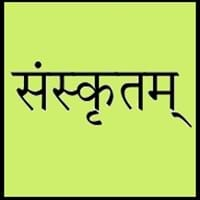Sanskrit vs Cantonese
Countries
India
Hong Kong, Macau
National Language
India
China, Guangdong
Second Language
Not spoken in any of the countries
Not spoken in any of the countries
Speaking Continents
Asia
Asia
Minority Language
Not spoken in any of the countries
Hawaii
Regulated By
Not Available
Civil Service Bureau, Government of Hong Kong, Official Language Division
Interesting Facts
- Sanskrit language has highest number of vocabularies than any other language.
- Sanskrit Language has proved to help in speech therapy, also it increases concentration and helps to learn maths and science better.
- Cantonese have lot of slangs, many of them include words that do not make sense at all and some also have English in them.
- Even though Cantonese and Mandarin are dialects of Chinese, Cantonese has 8 tones instead of Mandarin's 4.
Similar To
Old German Language
Chinese Language
Derived From
Prakrit Language
Not Available
Alphabets in
Sanskrit-Alphabets.jpg#200
Cantonese-Alphabets.jpg#200
Scripts
Devanagari
Chinese Characters and derivatives
Writing Direction
Left-To-Right, Horizontal
Left-To-Right, Horizontal, Top-To-Bottom
Hello
नमस्कारः (namaskāraḥ)
您好
Thank You
धन्यवादाः (dhanyawādāh)
谢谢
How Are You?
कथमस्ति भवान् (kathamasti bhawān)
你好吗?
Good Night
शुभरात्री (shubharātrī)
晚安
Good Evening
शुभः सायंकालः
晚上好
Good Afternoon
शुभ दुपार
下午好
Good Morning
सुप्रभातम् (suprabhātam)
早上好
Sorry
कृपया क्षम्यताम् (kripayā kshamyatām)
遗憾
Bye
पुनः मिलामः(punah milamah)
再见
I Love You
त्वामनुरजामि (twāmanurajāmi)
我爱你
Excuse Me
कृपया क्षम्यताम् (kripayā kshamyatām)
原谅我
Dialect 1
Not present
Guangzhou
Where They Speak
Not Available
outside mainland China
Dialect 2
Not present
Xiguan
Where They Speak
Not Available
Hong Kong
Dialect 3
Not present
Hong Kong
Where They Speak
Not Available
Hong Kong
Speaking Population
Not Available
Native Name
संस्कृतम् (saṃskṛtam)
Kwang Tung Wa
Alternative Names
Not Available
Guangfu, Metropolitan Cantonese
French Name
sanskrit
Not Available
German Name
Sanskrit
Not Available
Pronunciation
[səmskr̩t̪əm]
Not Available
Ethnicity
Not Available
Not Available
Origin
2000 B.C.
17th century
Language Family
Indo-European Family
Sino-Tibetan Family
Subgroup
Indo-Iranian
Not Available
Branch
Indic
Not Available
Early Forms
Vedic Sanskrit
No early forms
Standard Forms
Sanskrit
Standard Cantonese
Signed Forms
Not Available
Not Available
Scope
Individual
Not Available
ISO 639 1
sa
No data available
ISO 639 2/T
san
Not Available
ISO 639 2/B
san
Not Available
ISO 639 3
san
No data available
ISO 639 6
Not Available
Not Available
Glottocode
sans1269
cant1236
Linguasphere
No data available
No data available
Language Type
Ancient
Not Available
Language Linguistic Typology
Subject-Object-Verb
Not Available
Language Morphological Typology
Synthetic
Not Available
Sanskrit and Cantonese Language History
Comparison of Sanskrit vs Cantonese language history gives us differences between origin of Sanskrit and Cantonese language. History of Sanskrit language states that this language originated in 2000 B.C. whereas history of Cantonese language states that this language originated in 17th century. Family of the language also forms a part of history of that language. More on language families of these languages can be found out on Sanskrit and Cantonese Language History.
Sanskrit and Cantonese Greetings
People around the world use different languages to interact with each other. Even if we cannot communicate fluently in any language, it will always be beneficial to know about some of the common greetings or phrases from that language. This is where Sanskrit and Cantonese greetings helps you to understand basic phrases in Sanskrit and Cantonese language. Sanskrit word for "Hello" is नमस्कारः (namaskāraḥ) or Cantonese word for "Thank You" is 谢谢. Find more of such common Sanskrit Greetings and Cantonese Greetings. These greetings will help you to be more confident when conversing with natives that speak these languages.
Sanskrit vs Cantonese Difficulty
The Sanskrit vs Cantonese difficulty level basically depends on the number of Sanskrit Alphabets and Cantonese Alphabets. Also the number of vowels and consonants in the language plays an important role in deciding the difficulty level of that language. The important points to be considered when we compare Sanskrit and Cantonese are the origin, speaking countries, language family, different greetings, speaking population of these languages. Want to know in Sanskrit and Cantonese, which language is harder to learn? Time required to learn Sanskrit is 20 weeks while to learn Cantonese time required is 88 weeks.





